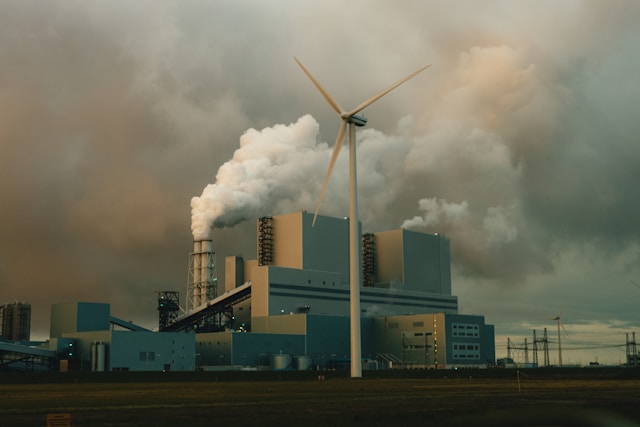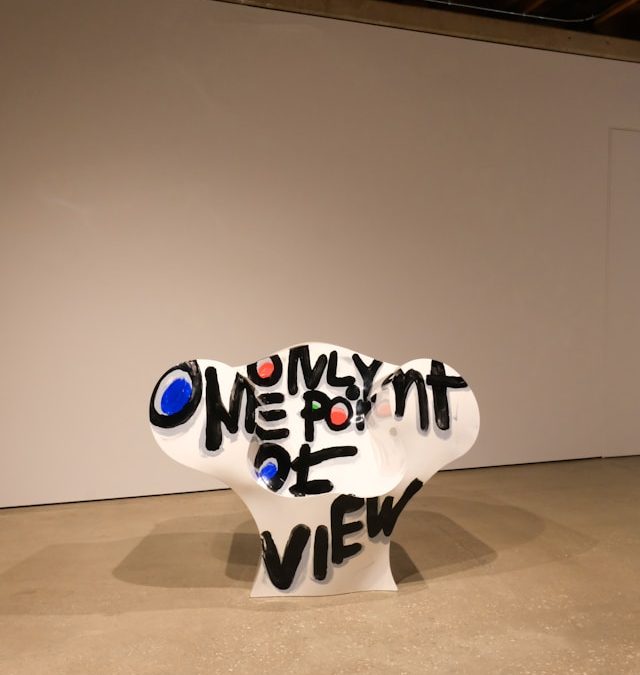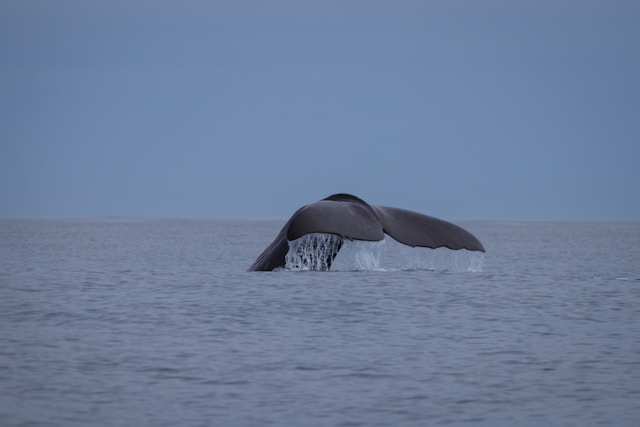“We need to pay countries to protect their forests, and that’s just not happening,” Mulder said. But the problem with carbon credits is they are likely to be used as offsets “to enable or justify ongoing emissions,” she said. “The best-case scenario is still not very good. And the worst-case scenario is pretty catastrophic, because we’re just locking in business as usual.”
The carbon offset market is an integral part of efforts to prevent effective climate action
by Adam Hanieh / CLIMATE&CAPITALISM
Committee for the Abolition of Illegitimate Debt (CADTM)
August 11, 2024
In early November 2023, shortly before the COP28 summit opened in Dubai, a hitherto obscure UAE firm attracted significant media attention around news of their prospective land deals in Africa.
Reports suggested that Blue Carbon—a company privately owned by Sheikh Ahmed al-Maktoum, a member of Dubai’s ruling family—had signed deals promising the firm control over vast tracts of land across the African continent. These deals included an astonishing 10 percent of the landmass in Liberia, Zambia and Tanzania, and 20 percent in Zimbabwe. Altogether, the area equaled the size of Britain.
Blue Carbon intended to use the land to launch carbon offset projects, an increasingly popular practice that proponents claim will help tackle climate change. Carbon offsets involve forest protection and other environmental schemes that are equated to a certain quantity of carbon “credits.” These credits can then be sold to polluters around the world to offset their own emissions. Prior to entering into the negotiations of the massive deal, Blue Carbon had no experience in either carbon offsets or forest management. Nonetheless the firm stood to make billions of dollars from these projects.
Environmental NGOs, journalists and activists quickly condemned the deals as a new “scramble for Africa”—a land grab enacted in the name of climate change mitigation. In response, Blue Carbon insisted the discussions were merely exploratory and would require community consultation and further negotiation before formal approval.
Regardless of their current status, the land deals raise concerns that indigenous and other local communities could be evicted to make way for Blue Carbon’s forest protection plans. In Eastern Kenya, for example, the indigenous Ogiek People were driven out of the Mau Forest in November 2023, an expulsion that lawyers linked to ongoing negotiations between Blue Carbon and Kenya’s president, William Ruto. Protests have also followed the Liberian government’s closed-door negotiations with Blue Carbon, with activists claiming the project violates the land rights of indigenous people enshrined within Liberian law. Similar cases of land evictions elsewhere have led the UN Special Rapporteur on the Rights of Indigenous Peoples, Francisco Calí Tzay, to call for a global moratorium on carbon offset projects.
Beyond their potentially destructive impact on local communities, Blue Carbon’s activities in Africa point to a major shift in the climate strategies of Gulf states. As critics have shown, the carbon offsetting industry exists largely as a greenwashing mechanism, allowing polluters to hide their continued emissions behind the smokescreen of misleading carbon accounting methodologies while providing a profitable new asset class for financial actors. As the world’s largest exporters of crude oil and liquified natural gas, the Gulf states are now positioning themselves across all stages of this new industry—including the financial markets where carbon credits are bought and sold. This development is reconfiguring the Gulf’s relationships with the African continent and will have significant consequences for the trajectories of our warming planet.
False Accounting and Carbon Laundering
There are many varieties of carbon offset projects. The most common involves the avoided deforestation schemes that make up the bulk of Blue Carbon’s interest in African land. In these schemes, land is enclosed and protected from deforestation. Carbon offset certifiers—of which the largest in the world is the Washington-based firm, Verra—then assess the amount of carbon these projects prevent from being released into the atmosphere (measured in tons of CO2). Once assessed, carbon credits can be sold to polluters, who use them to cancel out their own emissions and thus meet their stated climate goals.
Superficially attractive—after all, who doesn’t want to see money going into the protection of forests?—such schemes have two major flaws. The first is known as “permanence.” Buyers who purchase carbon credits gain the right to pollute in the here and now. Meanwhile, it takes hundreds of years for those carbon emissions to be re-absorbed from the atmosphere, and there is no guarantee that the forest will continue to stand for that timeframe. If a forest fire occurs or the political situation changes and the forest is destroyed, it is too late to take back the carbon credits that were initially issued. This concern is not simply theoretical. In recent years, California wildfires have consumed millions of hectares of forest, including offsets purchased by major international firms such as Microsoft and BP. Given the increasing incidence of forest fires due to global warming, such outcomes will undoubtedly become more frequent.
Again, this estimate depends on an unknowable future, opening up significant profit-making opportunities for companies certifying and selling carbon credits.
The second major flaw with these schemes is that any estimation of carbon credits for avoided deforestation projects rests on an imaginary counterfactual: How much carbon would have been released if the offset project were not in place? Again, this estimate depends on an unknowable future, opening up significant profit-making opportunities for companies certifying and selling carbon credits. By inflating the estimated emissions reductions associated with a particular project, it is possible to sell many more carbon credits than are actually warranted. This scope for speculation is one reason why the carbon credit market is so closely associated with repeated scandals and corruption. Indeed, according to reporting in the New Yorker, after one massive carbon fraud was revealed in Europe, “the Danish government admitted that eighty per cent of the country’s carbon-trading firms were fronts for the racket.”[1]
These methodological problems are structurally intrinsic to offsetting and cannot be avoided. As a result, most carbon credits traded today are fictitious and do not result in any real reduction in carbon emissions. Tunisian analyst Fadhel Kaboub describes them as simply “a license to pollute.”[2] One investigative report from early 2023 found that more than 90 percent of rainforest carbon credits certified by Verra were likely bogus and did not represent actual carbon reductions. Another study conducted for the EU Commission reported that 85 percent of the offset projects established under the UN’s Clean Development Mechanism failed to reduce emissions. A recent academic study of offset projects across six countries, meanwhile, found that most did not reduce deforestation, and for those that did, the reductions were significantly lower than initially claimed. Consequently, the authors conclude, carbon credits sold for these projects were used to “offset almost three times more carbon emissions than their actual contributions to climate change mitigation.”[3]
Despite these fundamental problems—or perhaps because of them—the use of carbon offsets is growing rapidly. The investment bank Morgan Stanley predicts that the market will be worth $250 billion by 2050, up from about $2 billion in 2020, as large polluters utilize offsetting to sanction their continued carbon emissions while claiming to meet net zero targets. In the case of Blue Carbon, one estimate found that the amount of carbon credits likely to be accredited through the firm’s projects in Africa would equal all of the UAE’s annual carbon emissions. Akin to carbon laundering, this practice allows ongoing emissions to disappear from the carbon accounting ledger, swapped for credits that have little basis in reality.
Monetizing Nature as a Development Strategy
For the African continent, the growth of these new carbon markets cannot be separated from the escalating global debt crisis that has followed the Covid-19 pandemic and the war in Ukraine. According to a new database, Debt Service Watch, the Global South is experiencing its worst debt crisis on record, with one-third of countries in Sub-Saharan Africa spending over half their budget revenues on servicing debt. Faced with such unprecedented fiscal pressures, the commodification of land through offsetting is now heavily promoted by international lenders and many development organizations as a way out of the deep-rooted crisis.
The African Carbon Markets Initiative (ACMI), an alliance launched in 2022 at the Cairo COP27 summit, has emerged as a prominent voice in this new development discourse. ACMI brings together African leaders, carbon credit firms (including Verra), Western donors (USAID, the Rockefeller Foundation and Jeff Bezos’ Earth Fund) and multilateral organizations like the United Nations Economic Commission for Africa. Along with practical efforts to mobilize funds and encourage policy changes, ACMI has taken a lead role in advocating for carbon markets as a win-win solution for both heavily indebted African countries and the climate. In the words of the organization’s founding document, “The emergence of carbon credits as a new product allows for the monetization of Africa’s large natural capital endowment, while enhancing it.”[4]
ACMI’s activities are deeply tied to the Gulf. One side to this relationship is that Gulf firms, especially fossil fuel producers, are now the key source of demand for future African carbon credits. At the September 2023 African Climate Summit in Nairobi, Kenya, for example, a group of prominent Emirati energy and financial firms (known as the UAE Carbon Alliance) committed to purchasing $450 million worth of carbon credits from ACMI over the next six years. The pledge immediately confirmed the UAE as ACMI’s biggest financial backer. Moreover, by guaranteeing demand for carbon credits for the rest of this decade, the UAE’s pledge helps create the market today, driving forward new offset projects and solidifying their place in the development strategies of African states. It also helps legitimize offsetting as a response to the climate emergency, despite the numerous scandals that have beset the industry in recent years.
Saudi Arabia is likewise playing a major role in pushing forward carbon markets in Africa. One of ACMI’s steering committee members is the Saudi businesswoman, Riham ElGizy, who heads the Regional Voluntary Carbon Market Company (RVCMC). Established in 2022 as a joint venture between the Public Investment Fund (Saudi Arabia’s sovereign wealth fund) and the Saudi stock exchange, Tadawul, RVCMC has organized the world’s two largest carbon auctions, selling more than 3.5 million tons worth of carbon credits in 2022 and 2023. 70 percent of the credits sold in these auctions were sourced from offset projects in Africa, with the 2023 auction taking place in Kenya. The principal buyers of these credits were Saudi firms, led by the largest oil company in the world, Saudi Aramco.
Beyond simply owning offset projects in Africa, the Gulf states are also positioning themselves at the other end of the carbon value chain: the marketing and sale of carbon credits to regional and international buyers.
The Emirati and Saudi relationships with ACMI and the trade in African carbon credits illustrate a notable development when it comes to the Gulf’s role in these new markets. Beyond simply owning offset projects in Africa, the Gulf states are also positioning themselves at the other end of the carbon value chain: the marketing and sale of carbon credits to regional and international buyers. In this respect, the Gulf is emerging as a key economic space where African carbon is turned into a financial asset that can be bought, sold and speculated upon by financial actors across the globe.
Indeed, the UAE and Saudi Arabia have each sought to establish permanent carbon exchanges, where carbon credits can be bought and sold just like any other commodity. The UAE set up the first such trading exchange following an investment by the Abu Dhabi-controlled sovereign wealth fund, Mubadala, in the Singapore-based AirCarbon Exchange (ACX) in September 2022. As part of this acquisition, Mubadala now owns 20 percent of ACX and has established a regulated digital carbon trading exchange in Abu Dhabi’s financial free zone, the Abu Dhabi Global Market. ACX claims the exchange is the first regulated exchange of its kind in the world, with the trade in carbon credits beginning there in late 2023. Likewise, in Saudi Arabia the RVCMC has partnered with US market technology firm Xpansiv to establish a permanent carbon credit exchange set to launch in late 2024.
Whether these two Gulf-based exchanges will compete or prioritize different trading instruments, such as carbon derivatives or Shariah-compliant carbon credits, remains to be seen. What is clear, however, is that major financial centers in the Gulf are leveraging their existing infrastructures to establish regional dominance in the sale of carbon. Active at all stages of the offsetting industry—from generating carbon credits to purchasing them—the Gulf is now a principal actor in the new forms of wealth extraction that connect the African continent to the wider global economy.
Entrenching a Fossil-Fueled Future
Over the past two decades, the Gulf’s oil and especially gas production has grown markedly, alongside a substantial eastward shift in energy exports to meet the new hydrocarbon demand from China and East Asia. At the same time, the Gulf states have expanded their involvement in energy-intensive downstream sectors, notably the production of petrochemicals, plastics and fertilizers. Led by Saudi Aramco and the Abu Dhabi National Oil Company, Gulf-based National Oil Companies now rival the traditional Western oil supermajors in key metrics such as reserves, refining capacity and export levels.
Rather, much like the big Western oil companies, the Gulf’s vision of expanded fossil fuel production is accompanied by an attempt to seize the leadership of global efforts to tackle the climate crisis.
In this context—and despite the reality of the climate emergency—the Gulf states are doubling down on fossil fuel production, seeing much to be gained from hanging on to an oil-centered world for as long as possible. As the Saudi oil minister vowed back in 2021, “every molecule of hydrocarbon will come out.”[5] But this approach does not mean the Gulf states have adopted a stance of head-in-the-sand climate change denialism. Rather, much like the big Western oil companies, the Gulf’s vision of expanded fossil fuel production is accompanied by an attempt to seize the leadership of global efforts to tackle the climate crisis.
One side to this approach is their heavy involvement in flawed and unproven low carbon technologies, like hydrogen and carbon capture. Another is their attempts to steer global climate negotiations, seen in the recent UN climate change conferences, COP27 and COP28, where the Gulf states channeled policy discussions away from effective efforts to phase out fossil fuels, turning these events into little more than corporate spectacles and networking forums for the oil industry.
The carbon offset market should be viewed as an integral part of these efforts to delay, obfuscate and obstruct addressing climate change in meaningful ways. Through the deceptive carbon accounting of offset projects, the big oil and gas industries in the Gulf can continue business as usual while claiming to meet their so-called climate targets. The Gulf’s dispossession of African land is key to this strategy, ultimately enabling the disastrous specter of ever-accelerating fossil fuel production.
Adam Hanieh is a professor of political economy and global development at the University of Exeter’s Institute of Arab and Islamic Studies. His forthcoming book is Crude Capitalism: Oil, Corporate Power, and the Making of the World Market.(Verso, September 2024).
Footnotes











